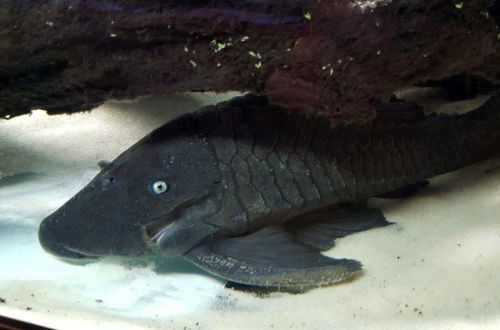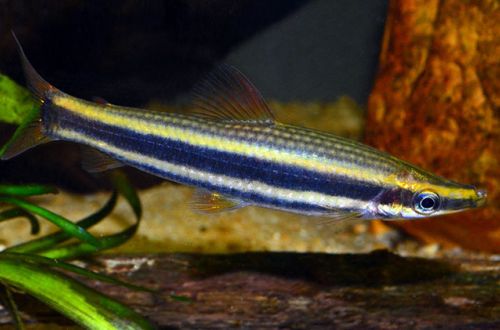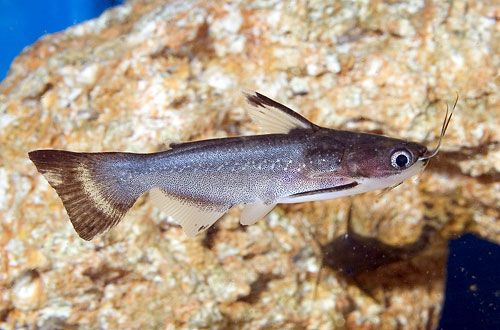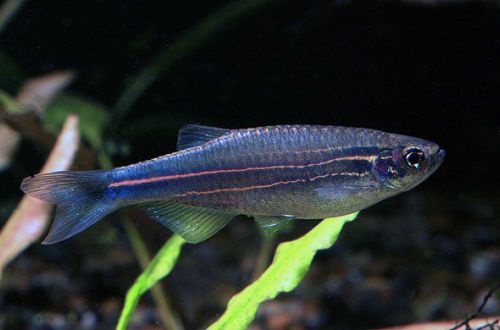
Kerry
The Kerry or Purple Emperor Tetra, scientific name Inpaichthys kerri, belongs to the Characidae family. A miniature fish with an original coloration, this primarily applies to males. Easy to keep, unpretentious, easy to breed. It gets along well with other non-aggressive species of a similar or slightly larger size.
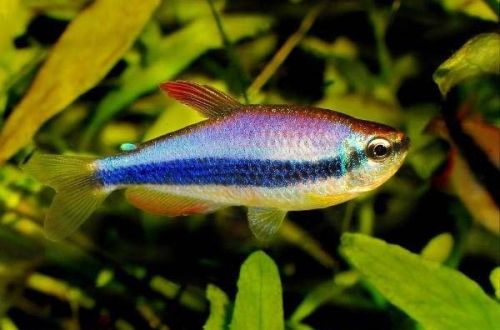
Contents
Habitat
It comes from the upper basin of the Madeira River – the largest tributary of the Amazon. It lives in numerous river channels and streams flowing through the rainforest. The water is opaque, very acidic (pH below 6.0), colored light brown due to the high concentration of tannins and other tannins released during the decomposition of organic matter (leaves, branches, tree fragments, etc.).
Brief information:
- The volume of the aquarium – from 70 liters.
- Temperature – 24-27°C
- Value pH — 5.5–7.0
- Water hardness – soft (1-12 dGH)
- Substrate type – sandy
- Lighting – subdued
- Brackish water – no
- Water Movement – Low/Moderate
- The size of the fish is up to 3.5 cm.
- Food – any food
- Temperament – peaceful, calm
- Keeping in a flock of at least 8-10 individuals
Description
Adults reach a length of about 3.5 cm. A wide horizontal dark stripe runs along the body, the color is blue with a purple tint. Males are more brightly colored than females, which often have a modest brown with a yellowish tinge. Due to the similarity in color, they are often confused with the Royal or Imperial Tetra, and the almost identical name adds confusion.
Food
Accepts all types of popular dry, frozen and live foods. A varied diet, such as flakes, granules combined with bloodworms, daphnia, etc., promotes the appearance of brighter colors in the coloration of the fish.
Maintenance and care, arrangement of the aquarium
A flock of 8-10 fish will require a tank with a volume of at least 70 liters. In the design I use a sandy substrate with numerous shelters in the form of snags or other decorative elements, dense thickets of plants that can grow in dim light. To simulate natural water conditions, dried fallen leaves, oak bark or deciduous tree cones are dipped to the bottom. Over time, the water will turn into a characteristic light brown color. Before placing the leaves in the aquarium, they are pre-washed with running water and soaked in containers until they begin to sink. A filter with a peat-based filter material can enhance the effect.
Another design or its complete absence is quite acceptable – an empty aquarium, however, in such conditions, the Purple Imperial Tetra will quickly turn into a gray nondescript fish, having lost all the brightness of its color.
Maintenance comes down to regular cleaning of the soil from organic waste (excrement, food residue, etc.), replacing leaves, bark, cones, if any, as well as weekly replacement of part of the water (15–20% of the volume) with fresh water.
Behavior and Compatibility
Peaceful schooling calm fish. They do not respond well to noisy, overly active neighbors such as Barbs or the African Red-Eyed Tetra. Kerry is perfectly compatible with other South American species, such as small tetras and catfish, Pecilobricon, hatchetfish, as well as rasboras.
This species has an undeserved reputation as “fin clippers”. The Purple Tetra does have a tendency to damage the fins of its tankmates, but this only happens when kept in a small group of up to 5-6 individuals. If you support a large flock, then the behavior changes, the fish begin to interact exclusively with each other.
Breeding / breeding
The appearance of fry is possible even in a common aquarium, but their number will be very small and will decrease every day if they are not transplanted into a separate tank in time. In order to increase the chances of survival and somehow systematize the breeding process (spawning was not spontaneous), it is recommended to use a spawning aquarium, where adult fish are placed during the mating season.
Usually this is a small container with a volume of about 20 liters. The design is arbitrary, the main emphasis is on the substrate. In order to protect the eggs from being eaten, the bottom is covered with a fine-mesh net, or with small-leaved plants or mosses (for example, Java moss). An alternative way is to place a layer of glass beads with a diameter of at least 1 cm. The lighting is subdued, a heater and a simple airlift filter are sufficient from the equipment.
The stimulus for the beginning of the mating season is a gradual change in the water parameters in the common aquarium to the following values: pH 5.5–6.5, dH 1–5 at a temperature of about 26–27°C. The basis of the diet should be frozen or live food.
Carefully observe the fish, soon some of them will become noticeably rounded – these are females swollen from caviar. Prepare and fill the spawning tank with water from the community tank. Put the females there, the next day a couple of large males that look the most striking.
It remains to wait until spawning occurs, its end can be determined by females, they will “lose weight” greatly, and eggs will be noticeable among the vegetation (under a fine mesh).
The fish are returned. The fry will appear within 24-48 hours, after another 3-4 days they will begin to swim freely in search of food. Feed with specialized microfeed.
Fish diseases
A balanced aquarium biosystem with suitable conditions is the best guarantee against the occurrence of any diseases, therefore, if the fish has changed behavior, color, unusual spots and other symptoms appear, first check the water parameters, and only then proceed to treatment.



